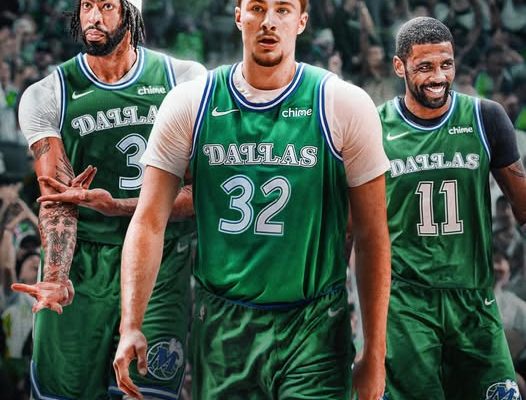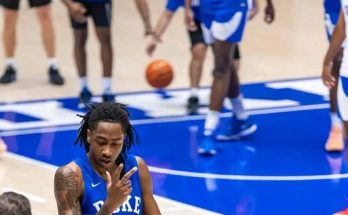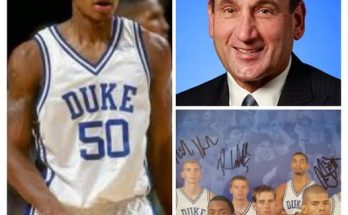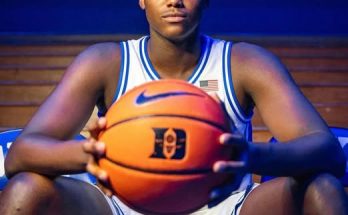The Dallas Mavericks have made a decision that has not only stirred excitement among their most loyal fans but also sent ripples through the entire NBA fanbase. In a move that blends heritage with flair, the franchise is officially bringing back their beloved retro green uniforms for the first time since 2021. It’s not just a jersey revival; it’s a cultural moment for Dallas, a nostalgic nod to the franchise’s storied past, and a signal that the Mavericks are ready to bridge eras as they continue their ascent in the modern game.
The retro green uniforms, originally worn in the early days of the franchise and last reintroduced during the 2020–21 NBA season, carry a rich legacy that dates back to the Mavs’ inception in 1980. For long-time followers of the team, these jerseys evoke memories of young upstarts carving out an identity in a league dominated by dynasties. Over time, those green threads became symbolic of grit, underdog spirit, and the potential that the Mavericks organization has always held.
The 2021 throwback campaign brought these jerseys into the limelight again, albeit briefly. Fans immediately responded with overwhelming positivity, with merchandise selling out quickly and social media buzz climbing. The blend of deep green and bold blue piping, along with vintage-inspired fonts and trims, stood out in an NBA landscape often dominated by modern minimalism. Now, with their return, there is a palpable sense that the Mavericks are not only honoring their roots but also reasserting their distinct identity in a league that thrives on brand evolution.
Team owner Mark Cuban has always been known for his progressive thinking and for pushing the envelope in ways that excite fans while challenging the status quo. This uniform return feels both like a savvy marketing decision and a heartfelt recognition of the fans’ deep connection to the franchise’s history. Cuban, who bought the team in 2000, has seen the Mavs go through dramatic transformations—some successful, others turbulent—but always with a clear commitment to building a strong brand presence. The reintroduction of the green uniforms fits seamlessly into that legacy, especially at a time when the team is retooling its roster and hoping to capture another title window in the coming years.
One can’t talk about these green uniforms without acknowledging the legends who wore them. Names like Rolando Blackman, Derek Harper, Mark Aguirre, and Brad Davis etched their place in Mavericks history during the original green era. These players laid the foundation for what the franchise would become. The return of the retro threads not only honors their contributions but serves as a visual bridge between generations of players and fans alike.
And while the green jerseys are steeped in tradition, their return in 2025 carries a new narrative. The current core, led by global superstar Luka Dončić and recently re-signed co-star Kyrie Irving, will now have the opportunity to etch their own legacy in those iconic uniforms. Luka, who is known not only for his brilliance on the court but also for his deep appreciation of basketball history, is the perfect torchbearer for this throwback movement. There’s a poetic symmetry in seeing a player with such a timeless game wear a jersey rooted in the team’s earliest years.
The reintroduction of the retro green uniforms also signals a shift in how NBA franchises are leaning into nostalgia as a tool for connection. In an era where fans are bombarded with content and choice, authenticity has become a premium. Throwback jerseys represent more than just aesthetics; they are portals to the emotional highs and lows of fandom. For Mavericks fans, that deep green is a visual anchor to everything the team has weathered—from playoff heartbreaks to historic victories, like the 2011 championship run led by Dirk Nowitzki.
The timing of the jersey return is also worth noting. The 2025–26 NBA season will mark the 45th anniversary of the Dallas Mavericks entering the league. That kind of milestone practically demands a reflective celebration, and what better way to commemorate it than by bringing back the uniform that started it all? It gives the team a way to pay tribute while energizing the present-day roster and offering a renewed sense of purpose.
What’s more, this move dovetails perfectly with current league-wide trends. The NBA has been fully embracing alternate and “City Edition” jerseys in recent years, but fans have often lamented the lack of consistency or emotional weight behind some of those designs. The Mavericks’ decision to revive a uniform with deep historical roots rather than conjuring something entirely new sends a message: the team knows what its identity is and isn’t afraid to double down on it.
The merchandise aspect also cannot be ignored. Retro gear is big business, and the Mavericks’ green jerseys rank among the most sought-after throwbacks across all NBA franchises. Retailers are already preparing for a spike in demand, and it’s likely that fans will see a broad rollout of green-themed merchandise, from snapbacks to hoodies and limited-edition collector’s items. In today’s sports marketing economy, where apparel drives massive engagement and revenue, this is a win-win for both the team and its supporters.
For younger fans who might not have seen the green uniforms in live action before, this reintroduction provides an educational entry point into Mavericks lore. It’s an invitation to learn about the team’s journey, its early years, and how far it has come. It’s also a reminder that before there was Luka, there were other stars, other moments, and other stories that deserve recognition.
This visual and emotional callback can also serve as a rallying cry for a fanbase eager to see the team rise again to the NBA’s elite tier. The Mavericks came close to making a deep playoff run recently, and there is cautious optimism that, with the right development and perhaps a few more roster tweaks, the team could make another push for the Finals in the next few years. Wearing the green could become a powerful psychological signal, both internally and externally, that the Mavericks are returning to their roots in order to forge something new.
There’s also an undeniable swagger that comes with retro gear. Across sports and pop culture, the resurgence of ‘80s and ‘90s aesthetics has proven remarkably enduring. The Mavericks’ green uniforms tap into this trend without feeling forced. Instead, they feel earned. They are a reminder of where the team began and a bold statement of where it intends to go. In many ways, that duality—past and future, nostalgia and ambition—is what defines the current era of the Dallas Mavericks.
Social media platforms are already buzzing with excitement. Posts featuring Luka Dončić in green-themed fan art are going viral, and former players are chiming in with their approval. The announcement, initially teased through a cryptic tweet and confirmed through an official team video, has been one of the most engaging offseason developments for the Mavericks in recent memory. It’s rare to see a jersey move make such a splash, but that’s the power of cultural memory and visual identity in sports.
As the 2025–26 season nears, anticipation continues to build. The green uniforms will no doubt be showcased in nationally televised games, perhaps even opening night or marquee holiday matchups. They may even serve as a centerpiece for the team’s community engagement initiatives, youth clinics, or heritage nights. It’s not just about what the players wear; it’s about what that fabric represents.
The Dallas Mavericks are more than a basketball team. They are a franchise with history, heart, and an unrelenting commitment to their fans. By bringing back the retro green uniforms, they’ve tapped into a deep well of emotion and tradition. But more than that, they’ve reminded everyone—players, fans, and rivals alike—that true legacy is not only remembered but also worn with pride.
In an NBA climate where trends come and go, the return of the Mavs’ green uniforms feels timeless. It’s a simple decision on the surface, but its implications are far-reaching. From the courts of Reunion Arena to the global stage of the American Airlines Center, from the early ‘80s to today’s social media era, the green has always meant something more. Now, it’s back—and Dallas is ready to wear it like a badge of honor.



